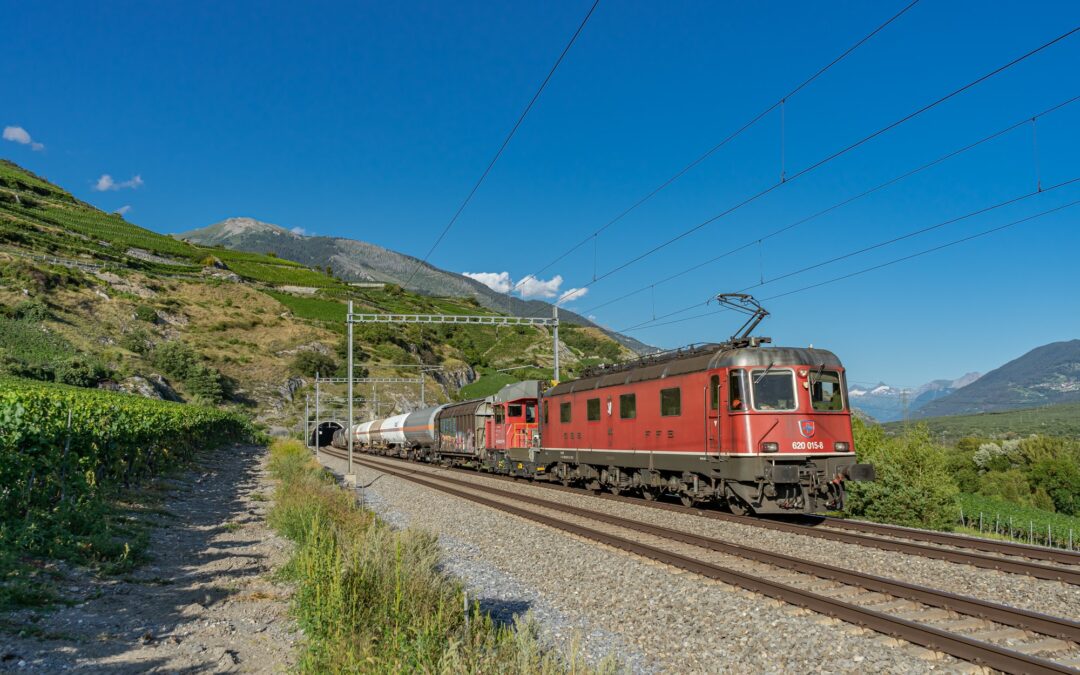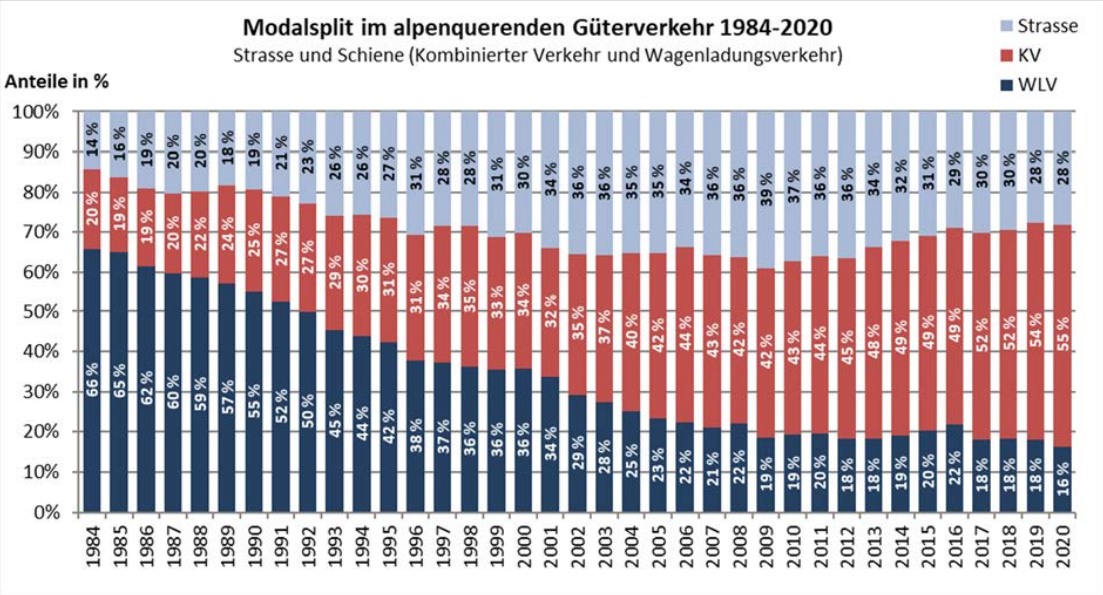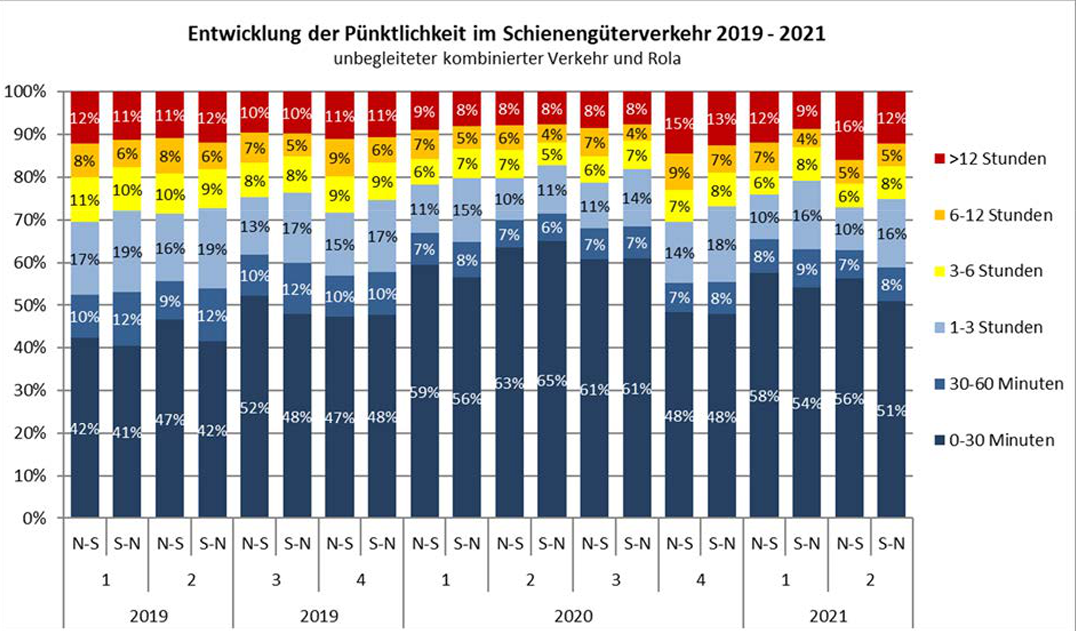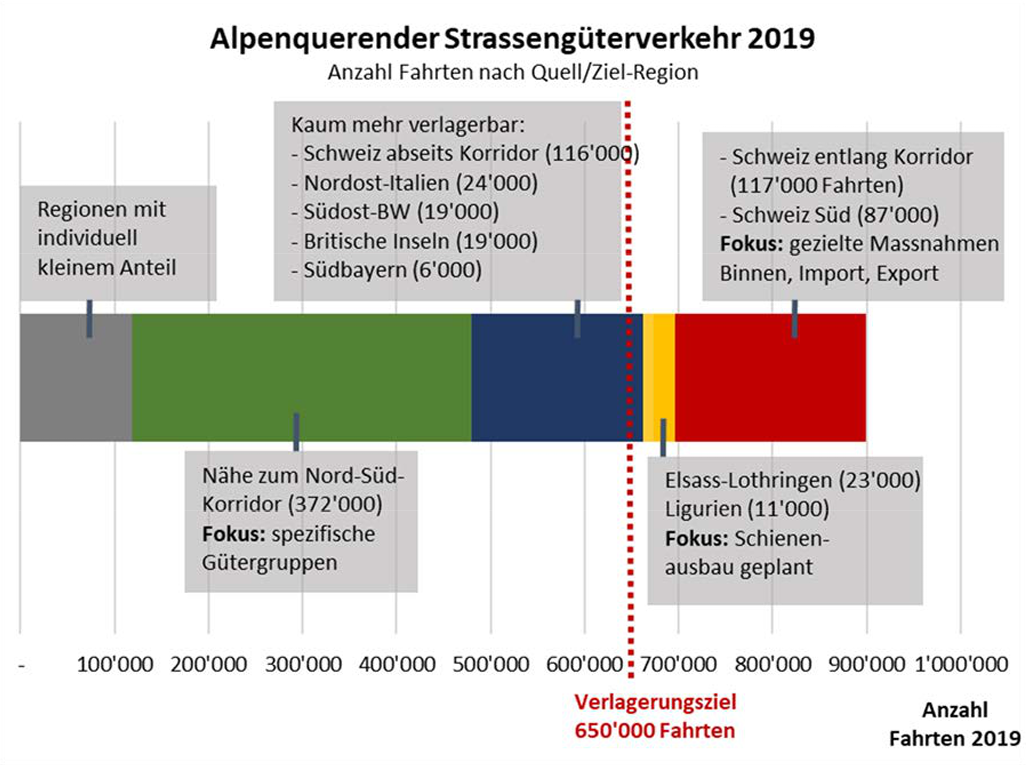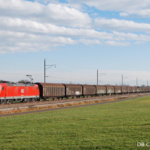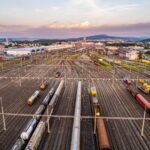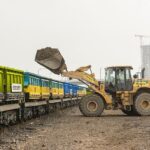The Federal Council’s “Modal shift report July 2019 – June 2021″ presents the development of transalpine freight traffic and environmental pollution on the transalpine transit axes. It then examines the status of implementation of the modal shift instruments and accompanying measures. Based on this, the Federal Council proposes various measures to support the modal shift. Finally, it makes an assessment of the continuation of the modal shift policy in the coming reporting periods.
Transit success story
The 2021 modal shift report shows that the direction taken in the development of transalpine freight transport is the right one. Monitoring and reporting are proving their worth. Nevertheless, much remains to be done. The number of transalpine journeys by heavy goods vehicles in 2021 is just under 900,000, which still clearly exceeds the legal requirement of 650,000. Further measures are urgently needed, especially in view of the upcoming decarbonisation of transport to achieve the 2050 climate targets.
Much done, much to do
We at the VAP believe that previous measures need to be sharpened and, in particular, that the financial support measures need to be expanded in a technology-neutral way. Today, it is done in unaccompanied combined transport. Other forms of rail transport are not promoted. Of course, we have to accept the limits of modal shift in transit and ensure that forces are bundled here. Nevertheless, it is the task of politics and business to explore the potential for further modal shift in transit. This is what we have done below.
Potential No. 1: Multimodality
Road, rail and sea complement each other perfectly. Shippers can combine these modes of transport to create efficient, multimodal logistics solutions, with rail freight transport being considered the backbone of multimodal logistics chains. Accordingly, the promotion of multimodality should be technology-neutral. Today, mainly unaccompanied combined transport is promoted, but not conventional rail freight. The result: the share of wagonload transport in transit is falling.
In our view, this is a missed opportunity. This is because the “Federal Act on the Transfer of Transalpine Heavy Goods Traffic from Road to Rail” (GVVG)1 allows the promotion of all rail freight traffic. We believe that all combined forms of road, rail and sea transport are part of multimodal logistics and must be treated equally both financially and in terms of infrastructure.
Potential No. 2: Quality monitoring
Currently, only unaccompanied combined transport is subject to monitoring. The aim is to determine the quality of transit traffic. In transit traffic, however, there is no quality monitoring in wagonload traffic. We also see this as a second missed opportunity. Because, as I said, the GVVG provides for the promotion of all rail freight transport. So the quality of all multimodal transports should be monitored. This applies equally to containers, semi-trailers, covered wagons, tank wagons and others.
Potential No. 3: Connectivity and productivity
The Federal Office of Transport (FOT), the Association of Public Transport (VöV) and we at the VAP are tackling the digitalisation of rail freight transport as part of a major project (cf. motion “Transporting goods more efficiently by rail through automation” by Josef Dittli, Member of the Council of States and VAP President). With the help of digital technologies, consignments can be tracked in real time, the flexibility of the freight railways can be increased, temperature checks can be carried out, and thus the quality of the entire rail freight transport can be massively improved. Digitalisation also allows digital train control and train integrity. Thanks to the elimination of fixed signals, it enables significant capacity increases in the existing railway network without additional expansion measures. Digitalisation and automation are thus essential components of a future-oriented modal shift policy.
Potential No. 4: Train path prices
At present, train-path prices are not set according to the polluter-pays principle. In other words, freight transport has to co-finance expensive standards for passenger transport. In an international comparison, the train path prices in Switzerland are very high and thus outside a realistic value creation in rail freight transport. After the temporary price reductions in the context of the Covid measures, in which the train path price tended towards practically zero in the European environment, the train path price remains well away from the European benchmark. Therefore, we consider a permanent reduction of the track access charges to be an urgent and efficient support measure.
Potential No. 5: Performance-related heavy vehicle charge (HVF)
Currently, two thirds of the proceeds from the HVF are credited to the Rail Infrastructure Fund (BIF). This corresponds to one billion Swiss francs annually. We propose a review of the earmarking of the HVF for expansions in the interest of freight transport. Although the HVF is supposed to limit the growth of heavy road traffic and promote the shift of freight traffic to the railways, it is often decided to use the revenue for expansions in favour of passenger traffic. For comparison: the northern bypass of Zurich alone costs 1 billion Swiss francs to close capacities in the east-west axis. The construction project was discussed in the AS 2035, but the Stadelhofen station with a comparable cost was given priority.
Potential No. 6: Access routes
Traffic on the feeder lines is constantly increasing. In order to make them attractive for freight traffic, the Federal Council insists on compliance with the existing expansion agreements with neighbouring countries. In addition, the Federal Council was already instructed in motion 20.3003 State treaty for a Neat access route on the left bank of the Rhine to realise an efficient alternative route on the left bank of the Rhine (flat railway) by means of a state treaty with France and Belgium. This should now be given priority. We are in favour of co-financing the Karlsruhe-Basel section on the left bank of the Rhine for the rapid realisation of an alternative route. This is the only way to improve the quality of the northern access route in the short term. The KVF‑N has allowed itself to be convinced by these arguments and has submitted motion 22.300 “Continuation of the successful modal shift policy and guarantee of national supply security thanks to expansion of the Wörth-Strasbourg NEAT feeder on the left bank of the Rhine”.
Potential No. 7: Alternatives
Naturally, there are certain limits to modal shift. Accordingly, efforts should be concentrated on suitable transport. Rail and road complement each other. Environmentally compatible drive technologies decisively advance the sustainable development of road transport. We therefore advocate the promotion of environmentally friendly drive systems with freedom of choice for owners. The design of the HVF would promote environmentally friendly technologies and guarantee investment security for ten years. The transport of dangerous goods over the Simplon Pass should be secured with an industry solution. Read more about this in the blog article “Transport of dangerous goods on the Simplon”.
At its meeting in early April 2022, the KVF‑N will deal with the question of additional support for transalpine freight transport. On behalf of the commission, the administration will show in an additional report which options are available for financing such a measure in addition to an adjustment of the train path prices. It is to be hoped that these additional measures will already take into account all rail traffic in transit in a technology-neutral manner.
1 Cf. Art 8 GVVG
